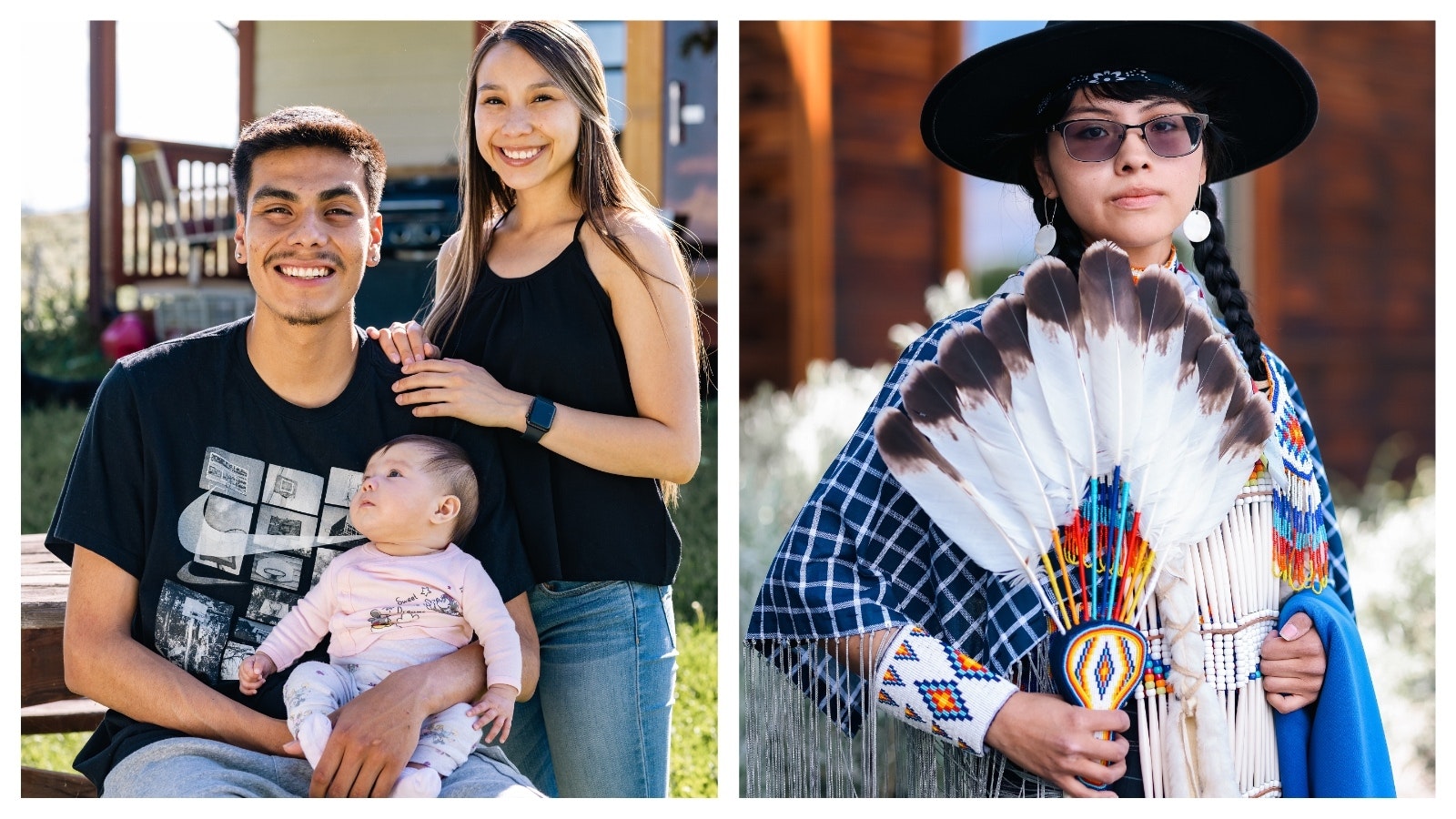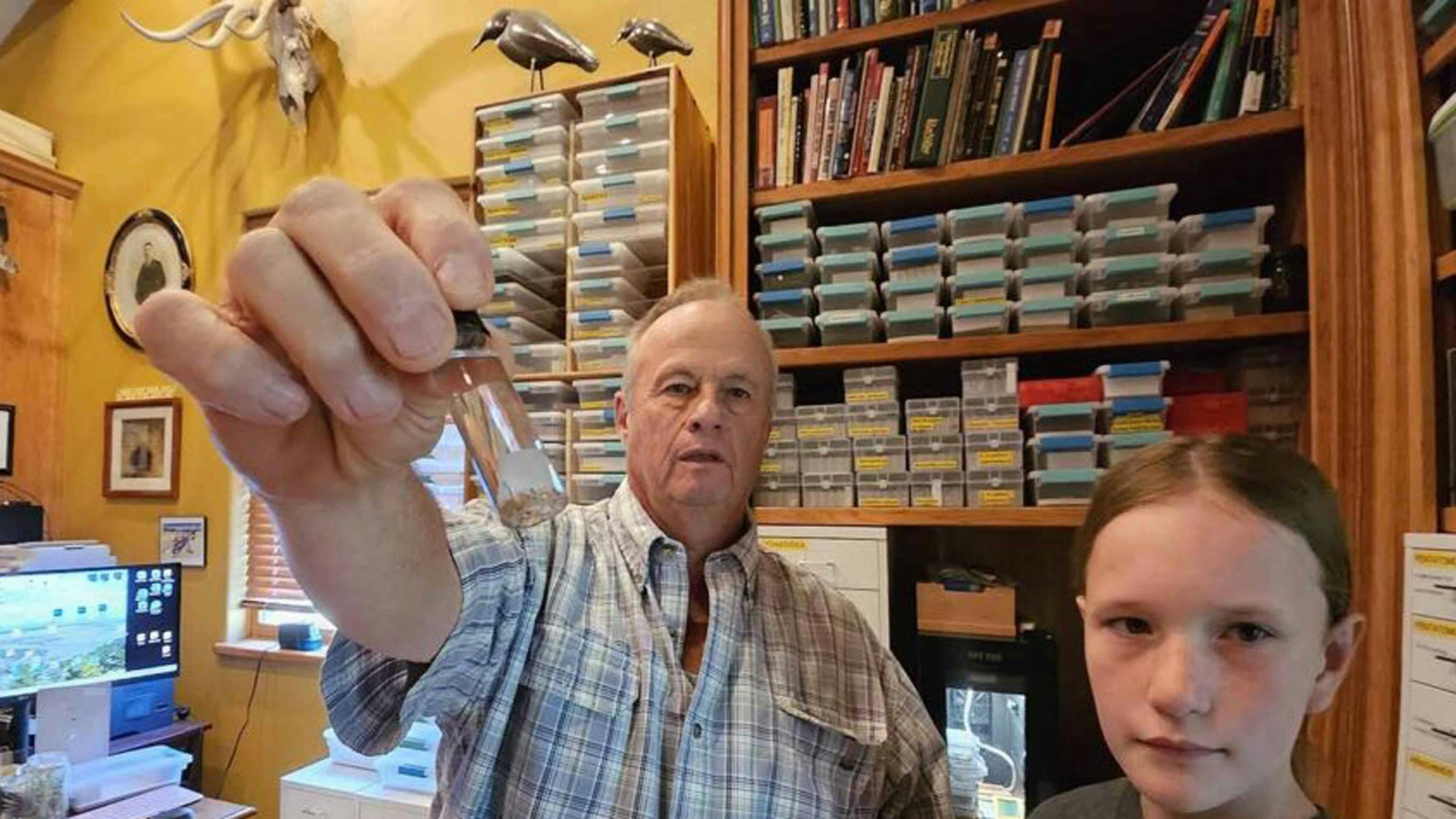The transition from adolescence to young adulthood is filled with excitement and challenges while navigating new responsibilities and building independence.
The journey for young Native Americans comes with the added pressures of ensuring the survival of their culture while also making sure their communities thrive for generations to come.
This is explored in “Generation Warrior,” a documentary about young Native Americans facing adulthood on the Wind River Indian Reservation.
The film follows the lives of eight young adults from both the Northern Arapaho and Eastern Shoshone tribes over a period of four years. Those featured tells their own stories of the challenges they face in “becoming warriors in a violent and changing world.”
“The central theme throughout this is them being able to retain their cultural ties and their spiritual connections to their communities and their families throughout all of these adversities and these challenges that they face through young adulthood,” producer Lynette St. Clair said.

Sharing Their Stories
“Generation Warrior” is the brainchild of co-directors and producers Bobbie Birleffi, who was born and raised in Cheyenne, and Jeanne Begley. Both are Emmy award winners.
“Wyoming has always been a really important part of my life and part of my identity,” Birleffi said. “Early on in the 80s, I did a film about coal and oil development in Wyoming, but I had never really been able to connect with the Wind River Reservation. Jeanne and I were talking and thought it would be incredible if young people from the reservation could just tell their stories in their own words.”
Wanting to find out if they could make it happen, Birleffi reached out to Wyoming PBS and then-general manager Terry Dugas, who connected her with St. Clair and Jordan Dresser in 2018. Dresser is a former Arapaho tribal chairman, and St. Clair, a cultural preservationist and language consultant. Both have a background in television. They were excited about the idea and signed on as co-producers.
Birleffi and Begley soon traveled to the Wind River Reservation to get started. They met with St. Clair and Dresser and had an open call for anyone interested in being a part of the documentary. Seventeen young people and their families responded and were eventually narrowed down to eight participants.
“We could tell from the minute we walked in and met them that we just really cared about them, and they seemed to open up and start telling us about themselves,” Birleffi said.
With the support of the Hughes Charitable Trust, Wyoming Humanities and the Wyoming Community Foundation, among others, they began filming the young people, who were around the ages of 17 or 18 at the time.
“We were following them as they were facing adulthood,” Birleffi said. “Think of the changes you went through in your own life from 17 to 21. That's what we were really filming. It's a portrait of their lives and we were fortunate enough to catch certain really critical decisions.”
Rich Culture and Traditions
The documentary follows Darious Tillman, Hudda Curry, Halle Robinson, Taylee Dresser, Gene Trosper, Gabby St. Clair, and Carmen and Matthew Underwood.
Many were in high school at the start of filming, and viewers will see the transition to college, jobs and military service for some, as well as starting relationships and families, and other life changes.
“Family is really important to us, that safety net and support of having family constantly there was hard for the young people that are moving, like Carmen and Matt. Matthew was in the Marines, so they had to uproot from the reservation, and he's stationed in different places,” St. Clair said. “We also had the young people who were couples who were just starting out and embarking on their relationships and their newly found status as a couple.”
While the negatives about reservation life, including high rates of crime, poverty and substance abuse are often seen in the news, the documentary offers a closer look at a rich, value-based community with a deep connection to their spirituality, traditions and languages.
“We've held those despite all of the policies that were set out against us,” St. Clair said. “We're still here. And so that, to me, is what ‘Generation Warrior’ represents.
“It's that warrior attitude about going forward in life and making things happen and overcoming adversity through their courage and their bravery.”
“They're out there making life happen, and not just living life,” she added. “For me, when you can tell a powerful, authentic story, you can change minds, and you can transform those relationships and those perspectives of people looking at the reservation.”
Growing Into Young Adults
Once filming began, the directors would travel out for several two week stretches throughout a four-year period to learn what was going on in the lives of the participants.
They were joined by a film crew from Colorado. COVID hit in the middle of filming but they managed to stay in touch through Zoom.
Through it all Birleffi said the participants were comfortable being on camera sharing their stories.
“People want to be visible, and they want to be understood,” she said. “I've learned that over and over again. But I think over time, as we kept coming back, they were willing to go the extra mile and talk about some really difficult things — suicide that has been in their lives, the loss of a parent and other difficult things. It shows how they are recovering and finding joy in life.
“And that, to me, is adulthood. We saw it happen.”
For St. Clair, watching the young people’s growth felt magical and she hopes the audience will be moved by just how courageous these young people are in sharing their story and “opening up their world to the world.”
“Their narratives were discovered and are owned, both individually and collectively,” she said. “I think that was my contribution to this documentary. I wanted to make sure that our young people were able to tell their own stories without us pushing them to a certain story we want them to tell.”

Different, Yet The Same
Birleffi feels this is a film not only for the members of the Wind River Reservation but also the larger non-native community.
The filmmakers give historical context about the Northern Arapahoe and Eastern Shoshone tribes, as well as the reservation itself. Professor Tarissa Spoonhunter from the University of Wyoming, Reinette Curry, director of the UW Native American Cultural Center, and Ivan Posey, Wyoming state legislator, provide analysis and context for the film.
“I learned so much from Lynette, Jordan and the kids about how historic trauma has affected this particular generation now, because they still carry it,” Birleffi said. “But the resilience that they show us during the film is part of the whole point of the film and why we made the film.”
Historical trauma, a term coined by Dr. Maria Yellow Horse Brave Heart of the University of New Mexico in the 1980s, refers to the collective, multigenerational and cumulative emotional and psychological wounding experienced by Native American communities due to historical events, such as forced relocation, genocide and the boarding school system. It has lasting impacts on Native American people, cultures and traditions.
“I think it's really important that viewers, both native and non-native to try to understand that worldview perspective and those differences that we each encounter,” St. Clair said. “Non-native people looking at the world through indigenous glasses and native kids looking at the world through a non-Native perspective.
“The young people that were going off to college, for example, were leaving the safety nets of their communities and their families and going off on their own to experience university life.”
Timely Film
Currently the filmmakers are still working on distribution for the film, but they’d like it to be available for Wyoming schools, and on a streaming platform in the near future.
“At a time when a lot of marginalized communities are being misunderstood or or just not known to people, this film, if it doesn't say anything else, says, ‘We're a lot and we're also a lot like you,’” Birleffi said. “It humanizes them. They did that themselves with their humor and their warmth and their humanity. They're Native Americans, but they're also Wyomingites and Americans.
“I'm excited for their lives,” she added. “I think they'll go on to do great things for the reservation and their families.”





